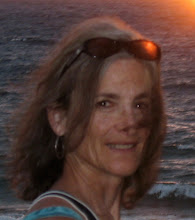
Shot in black and white reversal that achieves a contrast so stark, it’s almost painful to watch, the film focuses on a number theorist, Max Cohen (played by Sean Gullette, a film school buddy of director Aronofsky) who stands in front of a bathroom mirror and methodically draws a small circle on a designated part of his shaved head, then proceeds to drill a hole into it. Max’s mathematical genius is in great demand--by a Wall Street firm that believes he holds the key to the stock market and a group of Hassidic Jews who believes his work will lead to the true name of God. But in the end Max doesn’t want his genius. He wants to be “normal.”
The film, the result of a 28-day shoot with virtually no budget, won Aronofsky the 1998 Sundance Film Festival award for best director. Another friend from film school, Eric Watson, was the cinematographer for the film. Aronofsky wrote the script from a story by Watson, Gullette, and himself.
Pi plunges you into a world that is uncomfortable, creepy, the same kind of everyday “horror” that is depicted in Aronofsky’s later work, Requiem for a Dream (where Watson was also the cinematographer). In both films the main characters are under siege. Max endures crazed rabbis and cloying stockbrokers running after him, mercilessly picking and tugging at his incredible mind. He’s a man who is never at ease.
Max can relate only to his computer and occasionally seeks the understanding of his mentor, Russian mathematician Sol Robeson, played by Mark Margolis (Alberto in Scarface). Robeson has been pursuing the same calculation as Max all his life, but even Robeson tries to get Max to calm down, warning him that his very life is at stake.
Max is obsessed with patterns, the patterns he sees in everything—from shells to numbers. He believes that math holds the key to the universe—that by figuring out the mathematical pattern inherent in everything, he can understand everything. He’s a person who lives in his mind—his private heaven and hell.
The genius of the film is Aronofsky’s ability to make you feel what Max feels. It’s shot from the p.o.v. of the protagonist. Although you're on the other side of the celluloid, you don’t feel safe. It's if you're inside Max, feeling his vulnerability, his aloneness, and the bittersweetness of his genius. You feel his doleful desire to connect with the rest of the world, not as an intellectual oddity, but as one of “them.” And yet you find yourself not wanting him to give up his genius just to be “human.”
The wobbly film footage, achieved by hand-held camera, along with a dark, hypnotic and sometimes disturbing musical score by Clint Mansell lures us into the subterfuge that is Max’s world and makes it tortuously alive. The grainy high contrast images and repetitive music riffs stab at our insides and bring us into how it feels to be Max Cohen, a man who suffers seizures that attack him without warning and leave him drenched and helpless on the floor. When he drills the hole into his head, is it to remove the seizures or to remove the genius? Does he know that one is related to the other?
His dark existence is reminiscent of that of Dostoyevsky’s Underground Man in the novel by the same name. It’s one of constant agonizing and isolation from the rest of the world. Max’s life is spent primarily in the confines of his dingy New York apartment in the company of his homemade mainframe computer. Hour after hour he transfuses his computer with his own sweat and genius, dedicated to calculating the true Pi and the pattern within the figure, believing that the pattern is the source of all patterns in the universe. As viewers we are sucked into the vortex Max finds himself in, spiraling down further and further into a dark, oppressive place where all he seeks is the world to leave him alone so that he can commune with it. In the end, he’ll do anything to be “normal.”
 Interesting sidenote:
Interesting sidenote:Although the drilling into the head, among other things, is a fictional event, the character of Max may be based on the Chudnovsky brothers (David and Gregory). Born in the Soviet Union near Kiev, the brothers got their PhDs in math from the Ukrainian Academy of Sciences. Gregory was diagnosed with an autoimmune disorder of the muscles, myasthenia gravis, which led them to Paris and then USA for help.
In the early nineties in a rundown apartment near Columbia University in the Upper West Side of Manhattan, the brothers rented two supercomputers with which to calculate Pi and essentially lived off the income of their respective wives. Gregory, who needed assistance even to stand, did everything from his bed. Eventually the brothers built their own supercomputer from mail order parts in the apartment. The machine burned 2000 watts of power and ran day and night. In a March 2, 1992 article published in New Yorker, author Richard Preston wrote that the brothers were afraid to shut it down, because it might die. “[They call] their machine m zero. It occupies the former living room of Gregory's apartment, and its tentacles reach into other rooms.”
Gregory was awarded a MacArthur Foundation fellowship in mathematics. Thanks to the additional money from the fellowship, the brothers were able to upgrade their computer and they went on to set world records in calculating Pi with 480 million, 1 billion, and 8 billion digits.

No comments:
Post a Comment